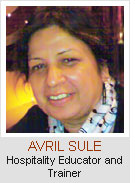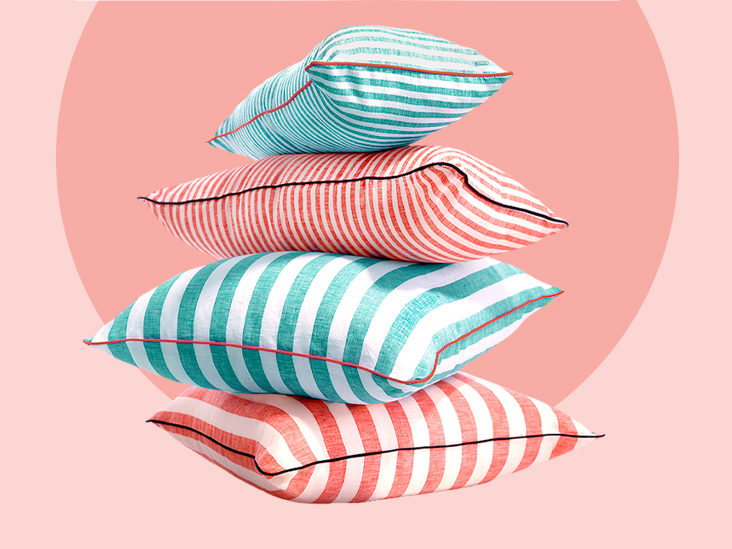 Over the years of being a Housekeeping Instructor, I introduced the topic of room linen, by making students list and add up the approximate cost of each linen item in a room and then multiply it by the number of rooms in a medium-sized hotel. This exercise never failed to bring out the realisation of the importance of a room linen.
Over the years of being a Housekeeping Instructor, I introduced the topic of room linen, by making students list and add up the approximate cost of each linen item in a room and then multiply it by the number of rooms in a medium-sized hotel. This exercise never failed to bring out the realisation of the importance of a room linen.
Linen products are the highest annual cost items in a hotel’s operational supply inventory, therefore getting a good value for money is the top priority of an executive housekeeper. This process begins while purchasing the initial supplies required to operate a hotel. The housekeeper must have a thorough knowledge of the composition and construction of the various fibres and fabrics so that purchase of these items can complement the property.
Hotels compete with each other by providing an array of complimentary items and facilities, but the greatest draw is a comfortable bed. Comfort is the top priority and a mattress selection is done when the project is underway. The firmness must be consistent in all areas of the mattress and sufficiently adequate to align the human spine. Paradoxically, it should be adequately soft so that the occupant does not lose sleep over it. Insisting on carrying out a ‘rest test’ on a sample mattress, would provide a clear picture of the comfort level that it provides. The thickness of a mattress may vary widely. The choice of a thick mattress, in the belief that it is more luxurious, could affect bed making operations adversely. I once stayed in a hotel where the bed was high and the mattress inordinately thick. I had the unique experience of climbing into the bed. The mattress should be supported by a sturdy bed frame and it should be rotated and flipped alternately. A periodic mattress-turning schedule can be ensured by a system of labelling at the corners. Also, routine airing for ten minutes in the bed making process, ensures that moisture absorbed from the body is dried out. Both these practices, help in increasing the lifespan of the mattress. When not in use, the mattress should be stored flat and never folded or rolled up. Ideally, the mattress should last for eight to ten years. Mattress protectors are expected to be moisture proof, stain resistant, non-allergenic and flame retardant. What actually exists, is a compromise on all of these requirements.
 Pillows, like mattresses are chosen for comfort. The combination of firmness for support and softness for luxury must be specified. Most hotels meet this need by having two sets of pillows, one soft and one firm. The ultra superior ‘down pillows’ that meet the standard of luxury, are likely to be unsuitable for those suffering from allergies. The wrong choice of a pillow, can quite literally be a pain in the neck! The use of a pillow slip, which is usually a remake from discarded linen, protects the pillow to a great extent. The truth about the hygienic standard of a pillow, was uncovered by a housekeeping colleague who carried her pillow wherever she travelled. While this seemed a little extreme I must admit that the likelihood of transfer of bacteria is particularly high. This brings us to a difficult question of how many pillows are required? The recent influx of pillows on the bed, causes one to wonder why any guest would need so many pillows.
Pillows, like mattresses are chosen for comfort. The combination of firmness for support and softness for luxury must be specified. Most hotels meet this need by having two sets of pillows, one soft and one firm. The ultra superior ‘down pillows’ that meet the standard of luxury, are likely to be unsuitable for those suffering from allergies. The wrong choice of a pillow, can quite literally be a pain in the neck! The use of a pillow slip, which is usually a remake from discarded linen, protects the pillow to a great extent. The truth about the hygienic standard of a pillow, was uncovered by a housekeeping colleague who carried her pillow wherever she travelled. While this seemed a little extreme I must admit that the likelihood of transfer of bacteria is particularly high. This brings us to a difficult question of how many pillows are required? The recent influx of pillows on the bed, causes one to wonder why any guest would need so many pillows.
Bed sheets, pillowcases and duvet covers are the only items that are changed daily. They are therefore purchased in larger quantities to suffice the operational need. The ‘par’ to be maintained, must allow for the laundering process as well as the ‘rest period’ on the shelf between uses to enhance the life span of the item.
Bed sheets should have a slightly lustrous appearance and provide comfort by being smooth, soft, absorbent and free from static. White bed sheets made of pure cotton with combed yarns and a thread count above 300 is the standard for superior quality bed sheets. Any blending with a man-made fibre offsets the disadvantages of the natural fibre in terms of laundering, compromising the absorbency and texture of the fabric and hence must be kept to a minimum. While selecting the bed sheets, the thread count should have the warp number ten more than the weft number. The tensile strength is measured by the amount of weight that will tear a 1’ by 3’ piece of the fabric. Although there are various finishing processes that a fabric may be subjected to, mercerised sheets are usually used as they have a lustre that withstands the laundry process. Size is a vital specification, a large bed sheet makes it cumbersome to tuck the surplus under the mattress, while a smaller sheet requires a lot of adjusting so that it can be tucked in. Pillowcases are generally made from the same fabric as bed sheets. Whether the housewife tuck-in type or the bag type that are folded in at the open end, they should be two to four inches more that the circumference of the pillow to put them easily in the pillow case.
Duvet covers are also made from the same fabric as the bed sheets, but may have a thread count as high as 400. Duvets are far lighter than and their warmth is rated in ‘togs’, the average duvet having a rating of 10.5 togs. It should be two to four inches larger all around for ease in operations. Hotels use a duvet with its cover as a bedspread and the complexity of trying to put a duvet into a duvet cover increases when the person performing it has short arms. A duvet is made with light but bulky material filled between two layers of cloth. Duvets are intended to give warmth and eliminate the restriction of the bed linen being tucked in.
Blankets are provided on request and therefore a few are kept in storage. They should be soft, smooth, resilient, not too heavy and provide warmth. Where luxury is affordable, pure woollen blankets are ideal. In order to cut costs, make laundering easier and prevent attack by insects, wool is often blended with a synthetic fibre and the percentage of wool is mentioned on the label. Proper protection of blankets is necessary to ensure that they are not damaged.
Hotels are placing bolsters, shams and bed runners on beds that provide a lustrous, luxurious touch and colour to the room. Bolster is an elongated pillow which was originally used on divans. It is not essential for it to be resilient, as it acts as a support for the arms or lower back. A dust ruffle is a pleated cloth skirting that extends around the sides and foot of the bed. It is often stitched on a muslin fabric that is placed between the mattress and the bed so that it is secured in place.
Bed linen must be purchased in consultation with the staff that supervises the room cleaning operations. It is the laundry department that is responsible for making sure that the bed linen stays white. Frequent random checks using a reflectometre should be conducted to ensure that standard is maintained. Moreover, a laundry test will evaluate dye stability, shrinkage, texture and strength of the fabric used.
The bed is the largest piece of furniture in a room reflecting comfort, luxury and hygienic standard of the hotel. A restful sleep is essential for any guest. Therefore every effort must be made to procure the best quality of bed linen available within the budget-.
Avril Sule can be contacted on avrilsule@gmail.com

